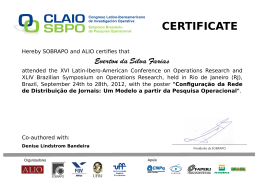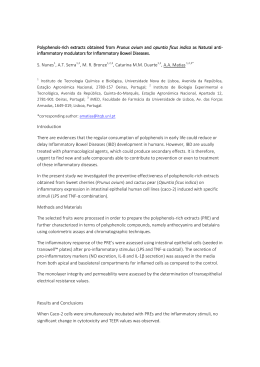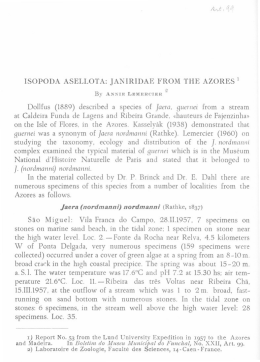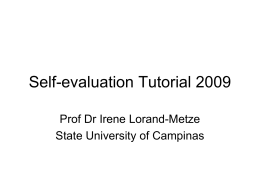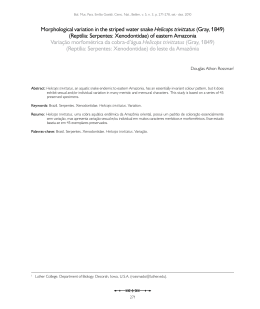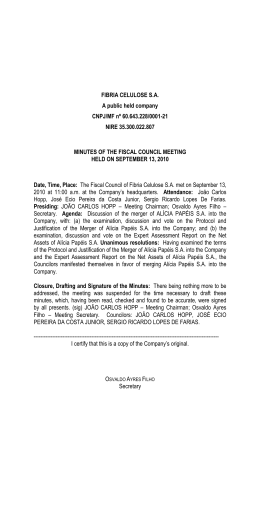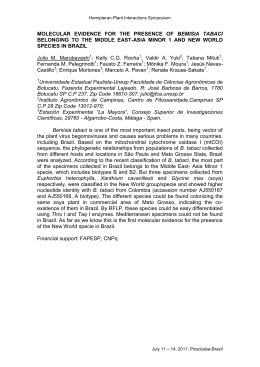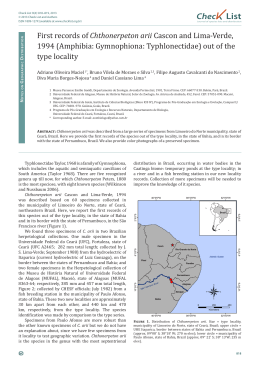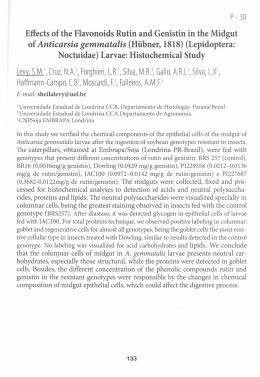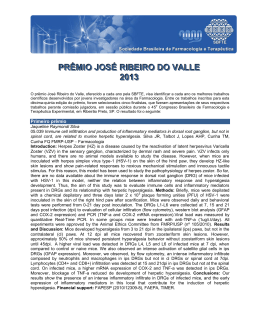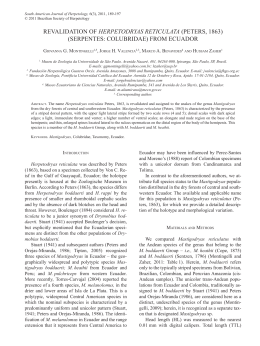( ) R1 ( ) R2 ( ) R3 ( ) PG0 ( ) PG1 (X) Estagiário ( ) Tecnólogo ( ) PIBIC Last Name - Farias First Name - Charles Middle - Costa Service (sector) Cornea and External Disease Nº CEP Impression cytology features of the scleral thinned after pterygium surgery Farias CC, Barros JN, Gomes JAP, Vieira LA, Souza LB Purpose: to demonstrate by impression cytology (IC) the cytological features of the scleral-conjunctival epithelium after pterygium surgery Methods: thirty seven cytological specimens were taken from 27 patients. Ten patients underwent bilateral sampling. The mean age was 64,18 (48 to 83), 18 were female and 9 were male.The techniques for IC specimen collection, preparation and examination have been described. In brief, nitrocellulose filter paper with the pore size of 0,45µm(Millipore HAWP304F0) was cut into strips of 5x7 mm. One drop of 0,5% proparacaine was placed in the inferior conjunctival sac before a nitrocellulose strip was applied to the wound area of the sclera thinned. After 5 seconds, the strip was peeled off and the specimen was immediately fixed for 10 minutes in solution previously prepared with 70% ethylic ethanol, 5 ml of glacid acetic acid and 5 ml of 37% formaldeid. All cytological specimens were processed and stained with periodic acid-Schiff-gill’s modified papanicolau stain. All IC specimens were obtained and studied by the same person (JNB) Results: The most important finding showed by IC was squamous metaplasia, goblet cell loss and intraepithelial inflammatory response with polymorphonuclear predominance. One patient presented atypical cells and area of calcification secondary to intense inflammatory reaction,suggesting pre neoplasic or neoplasic process, and was refered to anatomopatologic exam. The majority of the cases showed a nuclear/cytoplasmatic ratio (N/C) of 1:1-1:2. Conclusion: After pterygium excision by a bare-sclera procedure with or without intra operative dose of mitomycin C, beta irradiation or conjuntival transplantation, the wound heals with proliferation of goblet epithelial cells, squamous metaplasia and inflammatory process. IC proved to be useful in evaluating the effects of pterygium treatment.
Download

